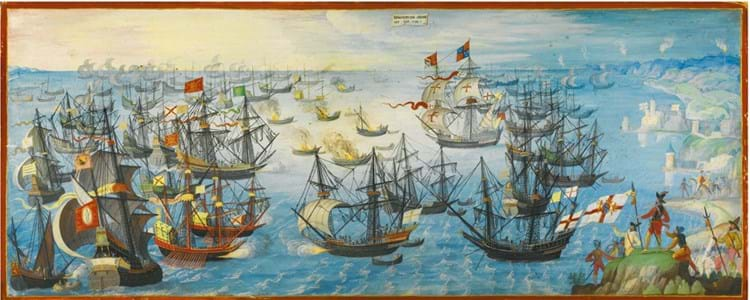
The Department for Digital, Culture, Media and Sport (DCMS) has placed a temporary export bar on the miniature, which shows Queen Elizabeth I watching the naval battle - one of few contemporary depictions of the Spanish Armada – following an application to export it.
Michael Ellis, minister for arts, heritage and tourism, said: “Although the Spanish Armada is one of the defining conflicts in England’s naval history, contemporary depictions of it are exceptionally rare. It is essential that we do our best to save this piece for the nation.”
The decision has been made due to the recommendations by the Reviewing Committee on the Export of Works of Art and Objects of Cultural Interest (RCEWA).
‘National treasure’
RCEWA member Peter Barber said: “There can be few items more justly called a ‘national treasure’ and it needs to be retained in this country so that it can be further studied and enjoyed.”
Experts believe the painting was produced c.1600, within a generation of the event.
The miniature shows Queen Elizabeth I watching the naval engagement, accompanied by Robert Dudley, Earl of Leicester. This reflected her personal intervention during the military campaign, when she rallied her troops through a speech at Tilbury.
In 1588 Philip II of Spain sent an 18,000-strong invasion force of 130 ships to England with the intention of overthrowing the Protestant Queen Elizabeth I and restoring Catholic rule. The defeat of the invading fleet has long been held as one of England’s greatest naval victories, which increased the monarch’s popularity and encouraged a new sense of patriotism in the country.
There are only two miniature paintings known that represent the Armada events. Little is known of this painting’s whereabouts until it was sent on long-term loan to the Rijksmuseum, the Museum of the Netherlands, between 1975-95.
Experts believe that the work, by an unknown artist, reflects a Dutch style of painting from this period, and may have been commissioned by an English patron with Dutch connections. It is signed in the lower right corner with an unverified artist’s monogram ( ‘V.H.E’).
The decision on the export licence application will be deferred until December 13. This may be extended until March, 13, 2019, if a serious intention to raise funds to purchase it is made at the recommended price of £210,000 (plus VAT of £6600).





